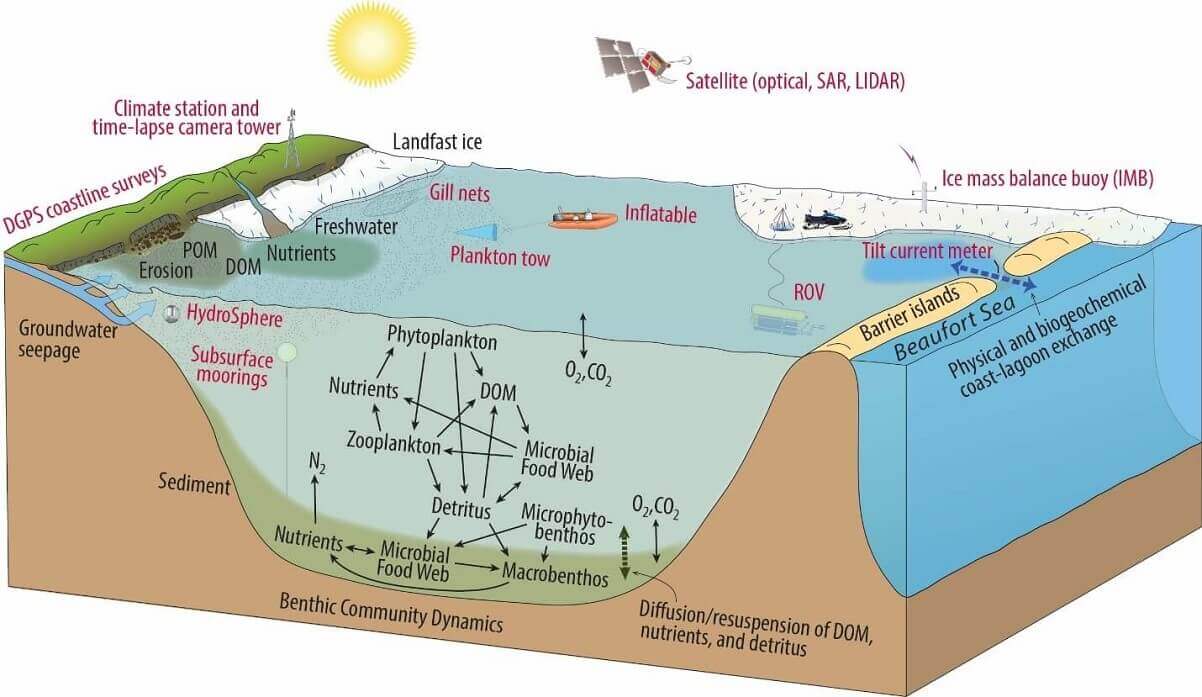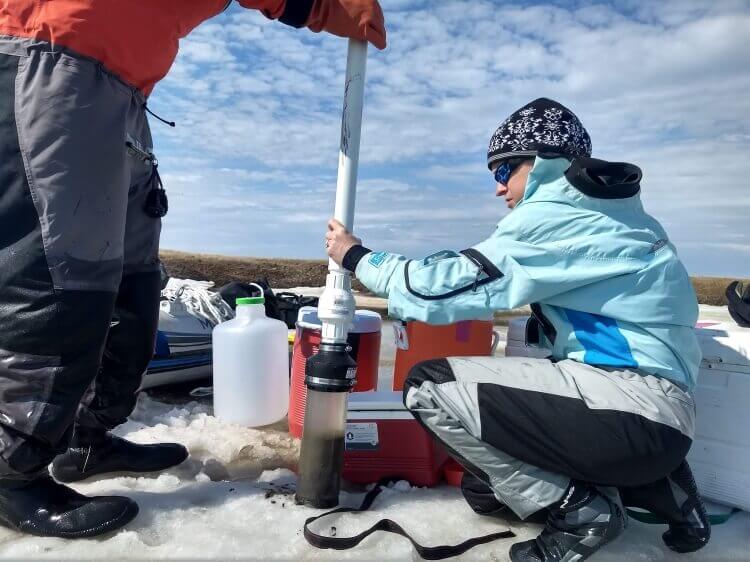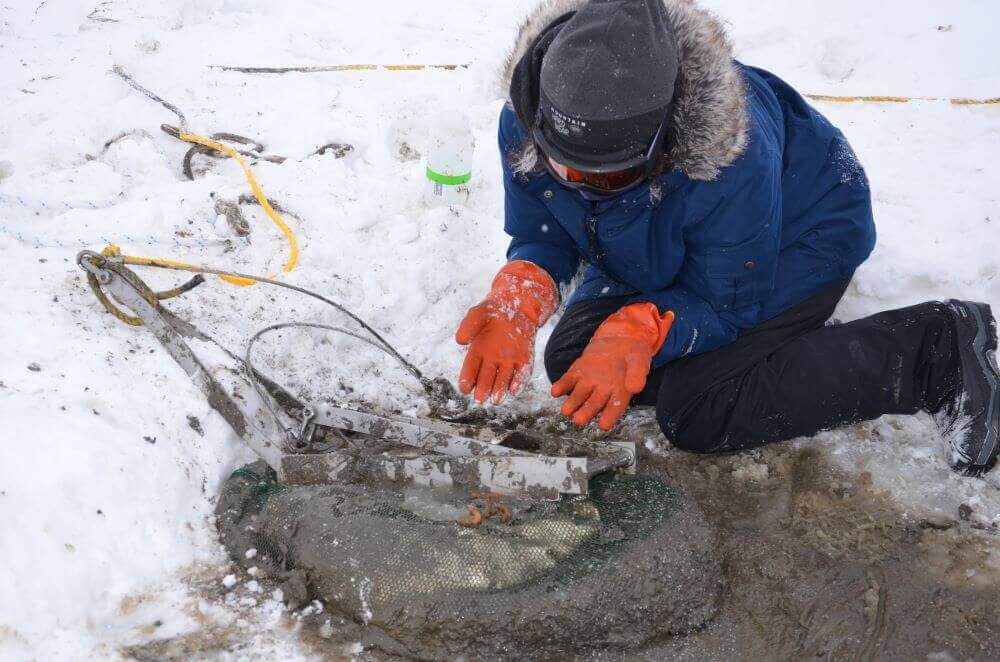Our Research at BLE LTER
We use lagoons along the Alaskan Beaufort Sea coast as experimental units to examine concepts of seasonality, resilience, stability and trophic redundancy over both spatial and temporal timeframes. Our work focuses on three research nodes: Elson Lagoon (western Beaufort), Simpson Lagoon and Stefansson Sound (central Beaufort), and Kaktovik Lagoon and Jago Lagoon (eastern Beaufort). At each node we conduct seasonal field studies during ice covered, ice break-up, and open water periods. Field activities include a variety of research that ranges from filtering seawater to examine phytoplankton abundance to incubating sediment cores to measure nutrient fluxes.
We analyze many organisms for the role they play in the food web from the microscopic bacterial community to larger animals like polychaetes (marine worms), amphipods (small crustaceans), and fish. Meteorology stations measure temperature and wind speed while stationary cameras capture the dynamic sea ice in the lagoons over the Arctic winter. Our oceanographers deploy instruments that spend the winter under the ice to measure currents, temperature, pH, and salinity.

Research areas
At BLE LTER, research is diverse and interconnected. We collect essential information about the lagoons such as their chemistry, hydrology, and biodiversity, in order to establish baselines and answer the project's core questions. Our investigators each bring their own expertise to the project and thus take the lead on different lines of inquiry; however everyone is on the same team when it comes to completing project goals.
Water and nutrient input
How do nutrients and water arrive in the lagoons?
Our study systems, although marine, recieve direct inputs from the land in the form of river discharge and coastal erosion. We use a variety of methods to understand the factors governing these processes. Regional models and digital methods such as drone aerial imaging reveal the big picture, while sampling and field methods dig into the fine grain dynamics.
Investigators: Mike Rawlins, Craig Tweedie, Jim McClelland.


Lagoon and sea interactions
How do changes in ice, river discharge, and barrier island morphology influence the connectivity between lagoons and Beaufort Sea shelf waters?
Seasonal and long-term changes in these factors all play a role in the land-lagoon-sea exchange. We utilize a combination of year-round and seasonally deployed sensors to measure the hydrography of the lagoons, the extent and thickness of ice, and other parameters.
Investigators: Andy Mahoney, Craig Tweedie.
Biogeochemistry and nutrient cycling
How are biogeochemical processes within the lagoons linked to inputs of terrestrial organic matter, primary production, and nutrient cycling?
We analyze lagoon waters/sediments and build comprehensive ecosystem models to find out the composition of organic and inorganic nutrients in the lagoons. These findings lead us to important insights about the pathways in space and time of important nutrients, such as carbon and nitrogen.
Investigators: Vanessa Lougheed, Amber Hardison, Jim McClelland, Yvette Spitz.


Biological communities
How do changes in the lagoons influence community structure, resilience, and food webs?
The lagoons teem with life, even in winter. We are interested in understanding community composition, the dynamics between producers and consumers, their persistence, and how they differ spatially and seasonally. Stable isotopes and other techniques provide insight into who's eating who in the lagoons. Cutting edge metagenomics help us understand the microbial assemblages in function and taxonomic classification.
Investigators: Bailey McMeans, Byron Crump, Katrin Iken, Ken Dunton.
Open science
BLE LTER is dedicated to open scientific research. Funded by the National Science Foundation as part of the Long Term Ecological Research network, making our research and data accessible and useful to the wider community is baked into our mission from the beginning. We strive to make available publicly most if not all of our publications, presentations, and data.